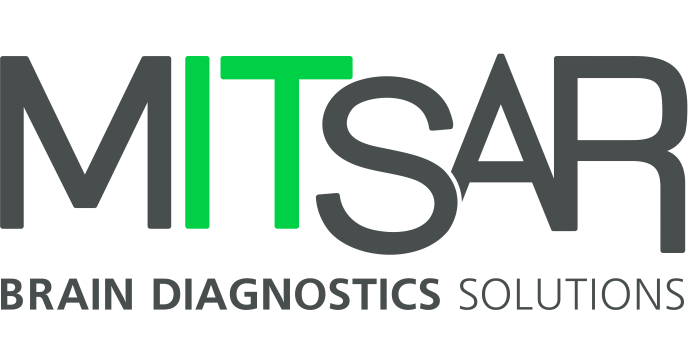How Can We Help?
These independent components of ERP linearly mixed will comprise the original averaged ERP signal. Each component is an independent piece of the ERP signal, representing a stage in the processing of the perception and then the motor aspects and then the cingulate’s self monitoring of the response. Though inter-related, each piece is a separate stage in the sequential process that creates the complexity of the ERP itself.
In WInEEG software we apply Infomax ICA algorithm to decompose original ERP into Independent Components and get these graphical ERP components you see in the display as well separately to de-artifact the original EEG data before processing.
| Component | Functional meaning | 2D map | 3D s-LORETA image | Comparison to norms Green -patient, Red -norm, blue -difference |
| P1N1 vO Cuneous, occipital lobe | Reflects processing in primary and secondary visual cortical areas. Corresponds to P1/N1 visual wave. |  |  |  |
| P1N2 vTL Angular gyrus and inferior temporal lobe | Reflects processing in left visual ventral stream. It’s sensitive to mismatch in the sensory domain when stimulus does not match the memory trace. |  |  |  |
| N1P2 vTR Angular gyrus and inferior temporal lobe | Reflects processing in right visual ventral stream. Both, left and right components correspond to N170 visual wave. |  |  |  |
| P3 b P Superior parietal lobe | Reflects engagement operation of accumulation brain resources for performing action. Corresponds to P3b wave. |  |  |  |
| P3 supF Premotor cortex, frontal lobe | Reflects operation of action inhibition when there is a need to suppress the ongoing activity in case of unpredicted event. |  |  |  |
| P4 mon CC Anterior cingulate | Reflects operation of conflict detection and monitoring. Indicates that there is a conflict between two or several action. |  |  |  |
| P3 novelty Medial Prefrontal cortex | Reflects operation of inhibition of ongoing activity when a novel event occurs. Corresponds to Novelty P3a wave. |  |  |  |

